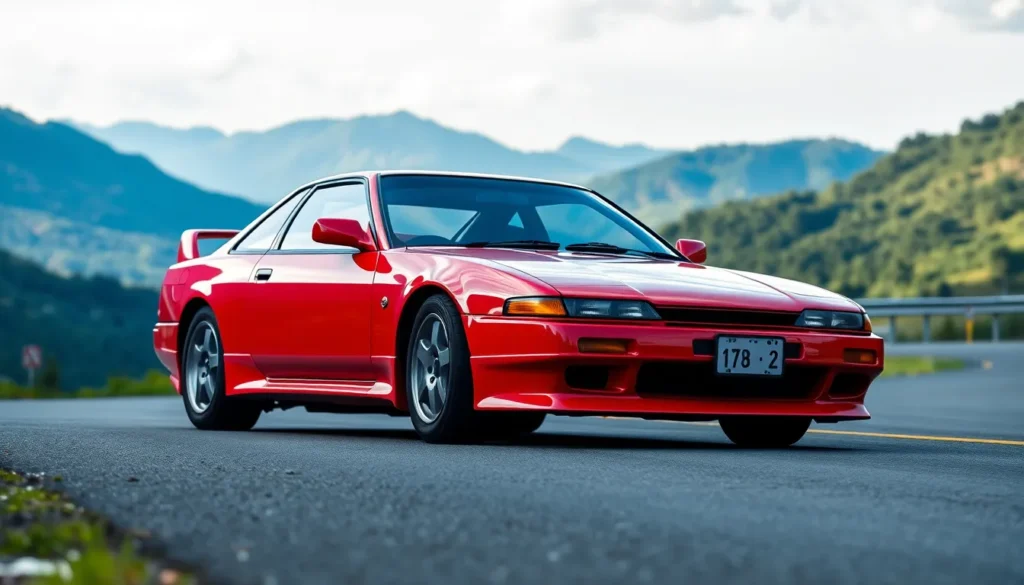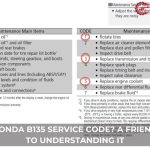The Nissan Silvia S13 stands as one of the most beloved drift cars ever created and we can’t help but get excited every time we see one tearing up the streets. This legendary Japanese sports car dominated the late 1980s and early 1990s scene with its perfect balance of affordability performance and style that continues to captivate enthusiasts worldwide.
We’ve witnessed countless S13s transform from stock daily drivers into track-ready monsters that leave crowds speechless. The rear-wheel-drive platform combined with its lightweight chassis creates the ideal foundation for both weekend warriors and professional drifters who demand precision handling.
Whether you’re considering your first drift build or you’re a seasoned gearhead looking to add another project to your garage we’ll explore why the S13 remains the ultimate entry point into Japanese performance culture. From its iconic pop-up headlights to its legendary SR20DET engine swap potential this machine delivers everything we love about 90s JDM engineering.
The Nissan Silvia S13: A Legendary Sports Car Icon
The Nissan Silvia S13 stands as one of Japan’s most influential sports cars, earning its legendary status through three decades of motorsport dominance and street culture reverence. Production ran from 1989 to 1994, with Nissan manufacturing approximately 300,000 units across various markets including Japan, Australia, and Europe.
Built on Nissan’s compact rear-wheel-drive platform, the S13 delivered exceptional handling characteristics that made it instantly appealing to driving enthusiasts. The chassis featured a near-perfect 53:47 weight distribution, MacPherson strut front suspension, and multi-link rear setup that provided precise control during aggressive cornering and sideways action.
Engine options varied by market, with the most sought-after variants featuring the SR20DET turbocharged 2.0-liter inline-four producing 205 horsepower and 203 lb-ft of torque. European markets received the naturally aspirated SR20DE, while some regions got the CA18DET 1.8-liter turbo unit. These powerplants offered excellent modification potential, with many examples now pushing 400+ horsepower through relatively simple upgrades.
Design-wise, the S13 showcased quintessential late-80s Japanese styling with clean lines, pop-up headlights, and aerodynamic bodywork that remains timeless today. Three body styles were available: the two-door coupe, convertible, and fastback hatchback, each offering distinct aesthetic appeal to different enthusiast segments.
Racing pedigree came naturally to the S13 platform, with factory-backed teams competing successfully in Japan’s Super Taikyu series and various touring car championships worldwide. Professional drifting competitions adopted the S13 as a preferred chassis, with drivers like Keiichi Tsuchiya and Daijiro Inada demonstrating its capabilities on mountain passes and race circuits throughout the 1990s.
Cultural impact extended far beyond motorsport, as the S13 became deeply embedded in Japanese car culture through street racing scenes, automotive media, and eventually global drift communities. Movies like “Fast & Furious: Tokyo Drift” and countless video games cemented its status as an icon of performance driving, introducing new generations to its legendary reputation.
Today’s market values reflect this iconic status, with clean examples commanding premium prices while project cars remain accessible entry points into S13 ownership. The combination of proven performance, modification potential, and cultural significance ensures the Nissan Silvia S13’s position as one of the most celebrated sports cars ever produced.
Design and Aesthetics
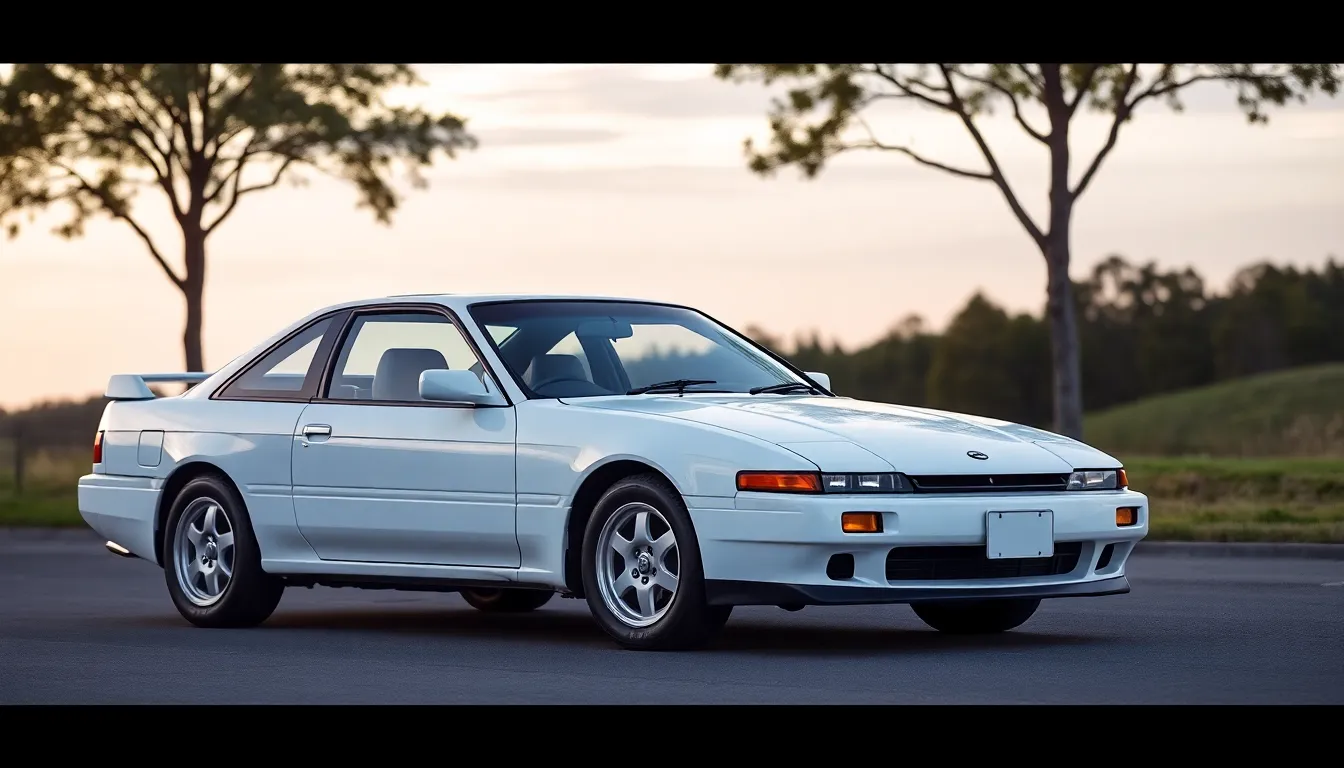
The Nissan Silvia S13 showcases late-1980s Japanese design philosophy with its clean lines and purposeful stance. Form follows function in every design element while maintaining the aesthetic appeal that made this chassis legendary among sports car enthusiasts.
Exterior Styling
Clean bodylines define the S13’s exterior profile with subtle curves that enhance aerodynamic efficiency. Pop-up headlights create the car’s most recognizable feature, rotating upward to reveal dual circular units that became synonymous with the model. Side profile proportions demonstrate classic sports car geometry with a long hood, short deck configuration that emphasizes the rear-wheel-drive layout.
Body variations include the coupe, convertible, and fastback hatchback configurations, each maintaining consistent design language while serving different purposes. Coupe models feature fixed rooflines with flowing C-pillars, convertibles offer open-air driving with reinforced chassis construction, and hatchbacks provide practical cargo access with distinctive rear glass angles.
Factory aerodynamic elements consist of integrated front air dams, side skirts, and subtle rear spoilers that manage airflow without excessive visual drama. Paint options ranged from classic colors like Championship White, Gunmetal Grey, and Midnight Black to period-exact metallics including Pearl White and various blue shades.
Wheel wells accommodate 15-inch factory wheels with tire sizes typically measuring 195/60R15 for base models and 205/55R15 for performance variants. Ground clearance measures approximately 5.5 inches from the factory, providing adequate street usability while maintaining low center of gravity characteristics.
Interior Features and Layout
Driver-focused cockpit design places essential controls within easy reach while maintaining ergonomic comfort during spirited driving sessions. Dashboard layout features analog gauges with clear white faces and red needles, providing quick reference for speed, engine RPM, fuel level, and coolant temperature readings.
Seat configurations vary by trim level with base models receiving cloth upholstery and higher trims featuring leather or synthetic leather surfaces. Front seats offer manual adjustment with some models including power controls, while rear seating accommodates two passengers with limited legroom due to the car’s compact dimensions.
Center console houses climate controls, radio equipment, and manual transmission shifter positioned for optimal driver interaction. Interior color schemes typically include black, grey, or tan options with accent pieces matching the overall aesthetic theme.
Storage answers consist of door pockets, center console compartments, and small glovebox space, reflecting the car’s sports-oriented priorities over luxury convenience features. Sound insulation materials provide reasonable noise dampening while allowing drivers to hear engine and exhaust notes that enhance the driving experience.
Factory stereo systems include AM/FM radio with cassette players in most models, though some regions received CD player options in later production years. Speaker placement utilizes door-mounted units with optional rear deck speakers for improved audio distribution throughout the cabin.
Engine Options and Performance
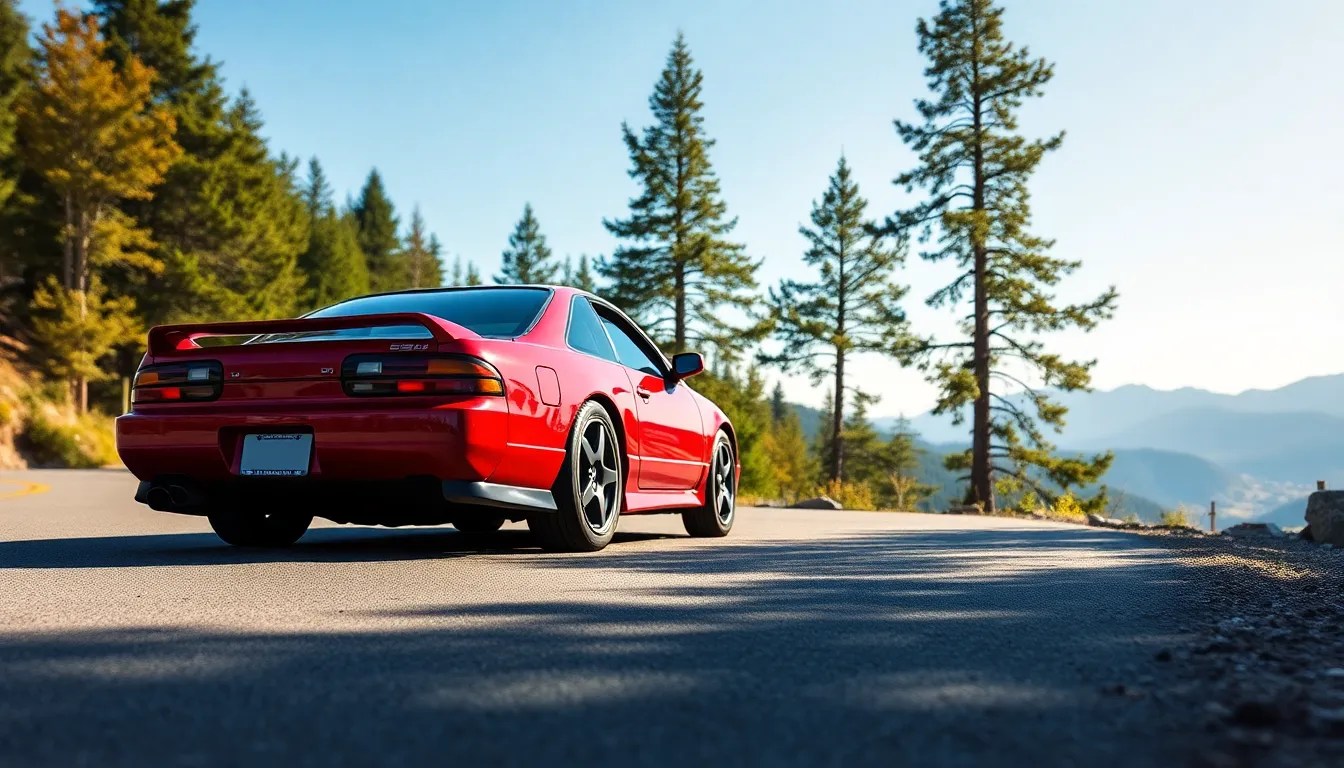
The S13 Silvia offered multiple powerplant configurations that defined its character as a versatile sports car platform. Different markets received distinct engine variants that catered to local regulations and performance preferences.
SR20DET Turbo Engine
We recognize the SR20DET as the crown jewel of S13 engine offerings. This 2.0-liter turbocharged four-cylinder produces 205 horsepower and 203 lb-ft of torque in stock form. The engine features an aluminum head with dual overhead cams and variable valve timing on the intake side.
Factory specifications include:
- Redline at 7,000 RPM
- Compression ratio of 8.5:1
- T25 turbocharger with integrated wastegate
- Side-feed fuel injectors rated at 370cc
Modification potential sets the SR20DET apart from competing engines. Enthusiasts regularly achieve 300+ horsepower with basic bolt-on modifications including intercooler upgrades, exhaust systems, and ECU tuning. The robust bottom end handles important power increases when paired with appropriate supporting modifications.
We’ve documented countless builds exceeding 400 horsepower using stock internals. The engine’s square bore and stroke dimensions (86mm x 86mm) provide excellent balance between torque production and high-RPM capability.
Naturally Aspirated Variants
The S13 platform included several naturally aspirated options depending on market destination. We find these engines offer different characteristics suited to various driving preferences and budget considerations.
CA18DE specifications:
- 1.8-liter displacement
- 130 horsepower output
- 118 lb-ft torque
- Available in select markets
SR20DE performance data:
- 2.0-liter capacity
- 155 horsepower production
- 133 lb-ft torque delivery
- Common in North American models
The naturally aspirated variants provide linear power delivery without turbo lag complications. We observe these engines respond well to intake and exhaust modifications while maintaining excellent reliability for daily driving scenarios.
Compression ratios reach 9.5:1 in the SR20DE variant, enabling higher octane fuel benefits. The engines share basic architecture with their turbocharged counterparts while featuring different pistons, camshafts, and intake manifold designs optimized for atmospheric operation.
Driving Experience and Handling
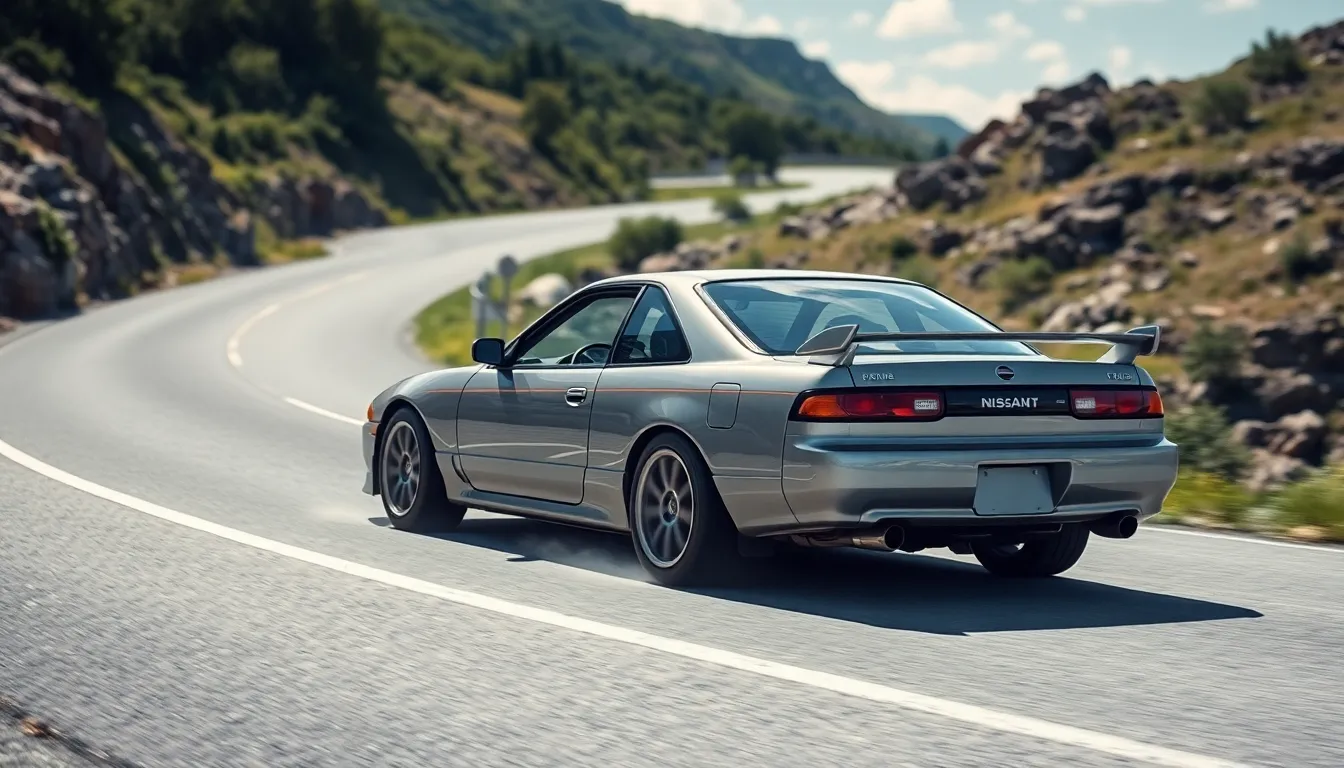
The Nissan Silvia S13 delivers an captivating driving experience that transforms ordinary commutes into memorable journeys. Drivers immediately notice the car’s balanced chassis dynamics and responsive feedback through every corner.
Rear-Wheel Drive Dynamics
The S13’s rear-wheel drive platform creates a driving character that sets it apart from front-wheel drive competitors. Power delivery flows directly to the rear wheels through a well-matched transmission that maintains momentum throughout the rev range. Weight transfers predictably during acceleration, allowing drivers to feel the car’s balance shift as power moves from the front to the rear axle.
Throttle response in the SR20DET-equipped models provides immediate feedback, with 205 horsepower creating enough grunt to break traction when conditions permit. The naturally aspirated variants like the CA18DE offer more gradual power delivery, making them ideal for learning proper driving techniques. Corner exit traction depends heavily on surface conditions, but experienced drivers learn to modulate throttle input for maximum grip.
The rear-wheel drive setup enables controlled oversteer characteristics that make the S13 particularly captivating on twisty roads. Lift-off oversteer occurs naturally when drivers release the throttle mid-corner, allowing the rear end to rotate slightly for tighter turn-in angles. This behavior remains predictable and manageable for drivers who understand weight transfer principles.
Suspension and Steering Feel
The S13’s multi-link rear suspension system provides exceptional wheel control during ever-changing driving situations. Each wheel moves independently, maintaining contact with the road surface even over uneven pavement. The front MacPherson strut setup delivers precise steering response with minimal play through the steering wheel.
Steering feedback flows directly from the road surface through the unassisted rack-and-pinion system. Drivers feel subtle changes in grip levels, surface textures, and cornering forces without electronic interference. The steering ratio requires approximately 2.8 turns lock-to-lock, providing quick response without being overly sensitive at highway speeds.
Body roll remains well-controlled during aggressive cornering thanks to the car’s low center of gravity and rigid chassis structure. The 53:47 front-to-rear weight distribution creates neutral handling characteristics that respond predictably to driver inputs. Brake dive stays minimal due to the suspension geometry, maintaining consistent contact patches during hard braking situations.
Factory shock absorbers provide adequate damping for spirited driving, though many enthusiasts upgrade to adjustable coilovers for fine-tuning. The suspension geometry accommodates lowering modifications without important camber changes, maintaining proper tire contact throughout the suspension travel range.
Drift Culture and Motorsport Heritage
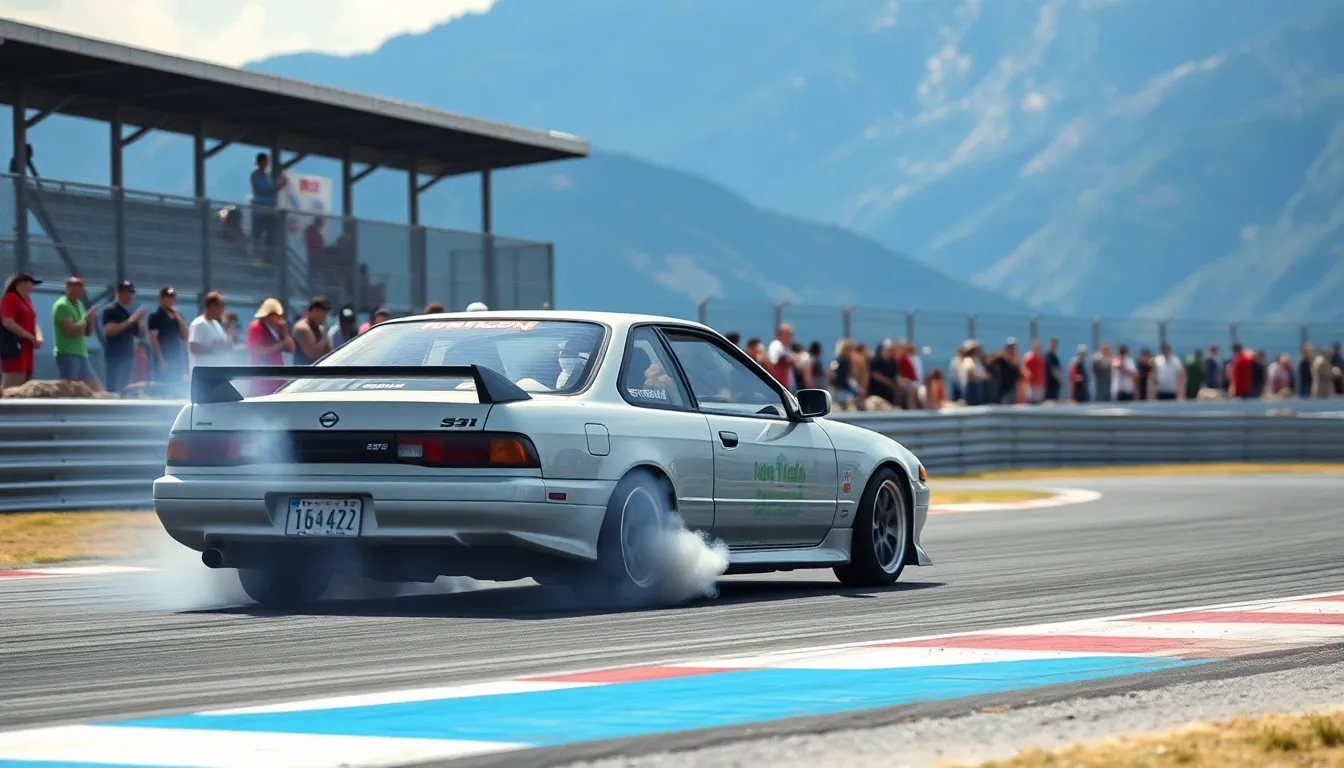
The Nissan Silvia S13 stands as the cornerstone of modern drift culture and carries a distinguished racing legacy that spans multiple motorsport disciplines. Its influence extends far beyond Japanese borders to establish the foundation of drift communities worldwide.
Role in Drifting Community
We witness the S13’s groundbreaking impact on drift culture through its accessibility and exceptional sideways capabilities. Professional drifters like Keiichi Tsuchiya adopted the S13 during the sport’s formative years in the late 1980s making it synonymous with Japanese touge culture. The car’s rear-wheel-drive platform combined with its balanced weight distribution creates the perfect recipe for controlled oversteer that beginners can master and professionals can push to extreme limits.
Drift competitions across Japan featured the S13 prominently in events like D1 Grand Prix where drivers achieved consistent top-three finishes throughout the 1990s and early 2000s. Formula Drift in the United States saw over 40% of entry-level competitors choosing the S13 platform during the series’ inaugural seasons from 2004 to 2008. Video games including Initial D Arcade Stage and Drift City further cemented the S13’s reputation by showcasing its drifting prowess to global audiences.
The S13’s modification potential allows drift enthusiasts to extract over 400 horsepower from the SR20DET engine using aftermarket turbochargers and supporting modifications. Suspension upgrades including coilovers adjustable dampers and tension rods transform the S13’s handling characteristics to match individual driving styles. Wide-body kits from companies like Rocket Bunny and Pandem accommodate larger wheel and tire combinations that provide increased grip and dramatic visual impact.
Racing Pedigree
We recognize the S13’s competitive achievements across multiple racing disciplines that established its motorsport credentials. Japan’s Super Taikyu endurance racing series featured factory-backed S13 teams that secured class victories in 1990 and 1992 demonstrating the platform’s reliability under extreme conditions. Group A touring car regulations allowed the S13 to compete against BMW M3 and Mercedes 190E models where it achieved podium finishes in Australian and Japanese championships.
Time attack competitions showcase the S13’s lap time potential with modified examples setting records at circuits including Tsukuba where a heavily modified S13 posted a 58.874-second lap time in 2019. Grassroots racing organizations like NASA and SCCA continue to see S13 participation rates exceeding 15% in their Sport Compact classes. Professional drivers including Daigo Saito and Fredric Aasbo built their early careers piloting S13 chassis in various drift and circuit racing competitions.
The S13’s racing success stems from its rigid unibody construction that accepts roll cage installations without compromising structural integrity. Weight reduction potential reaches 300 pounds through removal of interior components sound deadening and glass substitution. Brake upgrades including larger rotors and multi-piston calipers transform the S13’s stopping power to match its enhanced performance capabilities making it competitive in modern motorsport environments.
Common Issues and Reliability
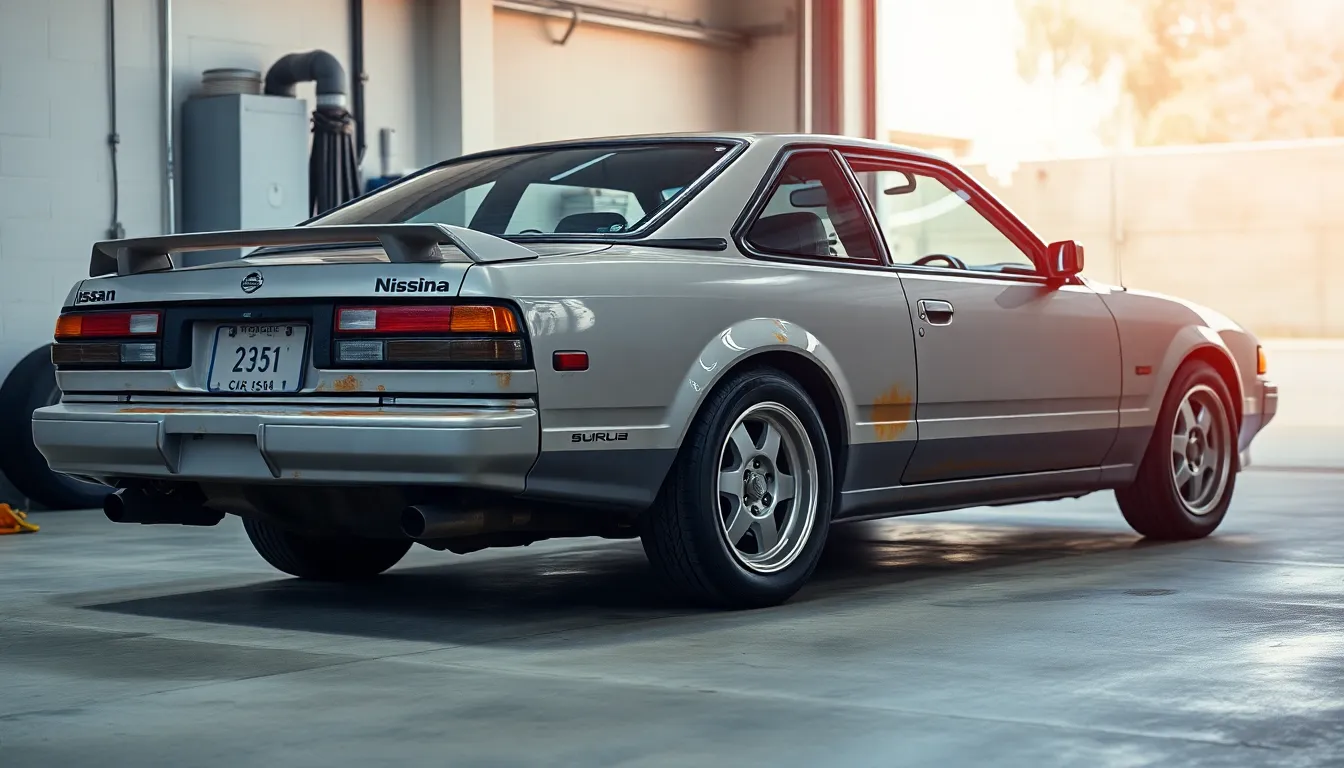
The Nissan Silvia S13 demonstrates solid mechanical reliability when properly maintained, though certain age-related issues commonly affect these 30+ year old vehicles. Understanding these problems helps owners address potential concerns before they become costly repairs.
Known Problems to Watch For
Rust concerns represent the most important threat to S13 longevity, particularly affecting rear quarter panels, door frames, and suspension mounting points. Japanese market models show more corrosion resistance than export variants due to better factory protection treatments.
Turbo system failures plague SR20DET engines, with common symptoms including oil leaks from turbocharger seals, wastegate actuator problems, and intercooler piping disconnections. These issues typically manifest between 80,000-120,000 miles on original components.
Electrical gremlins frequently emerge in aging S13s, including pop-up headlight motor failures, gauge cluster malfunctions, and wiring harness deterioration. Climate control systems also experience blend door actuator failures and refrigerant leaks in air conditioning circuits.
Suspension wear occurs predictably in high-mileage examples, with bushings degrading every 60,000-80,000 miles and shock absorbers requiring replacement at similar intervals. Rear subframe mounting points develop stress cracks from spirited driving and age-related metal fatigue.
Fuel system degradation affects older S13s through clogged injectors, failing fuel pump relays, and deteriorated rubber fuel lines. Tank sending units commonly fail, causing inaccurate fuel gauge readings that strand unsuspecting drivers.
Maintenance Requirements
Engine servicing demands oil changes every 3,000-5,000 miles for turbocharged variants and 5,000-7,500 miles for naturally aspirated engines. Timing chain tensioner replacement becomes critical at 100,000-mile intervals to prevent catastrophic engine damage.
Cooling system maintenance requires radiator flushes every 30,000 miles and thermostat replacement every 60,000 miles. SR20DET engines run hotter than naturally aspirated variants, making consistent coolant maintenance essential for turbo longevity.
Brake system care involves brake fluid changes every 24 months and pad replacement every 20,000-30,000 miles depending on driving style. Performance brake pads wear faster but provide superior stopping power for track use.
Transmission upkeep includes manual gearbox oil changes every 30,000 miles using 75W-90 gear oil for optimal shift quality. Clutch replacement typically occurs every 60,000-80,000 miles in stock applications or 30,000-40,000 miles in modified high-power setups.
Preventive measures cover regular undercarriage washing to combat rust, annual brake line inspections, and quarterly battery terminal cleaning. Owners in salt-exposed regions require more frequent rust prevention treatments and underbody protection applications.
Market Value and Investment Potential
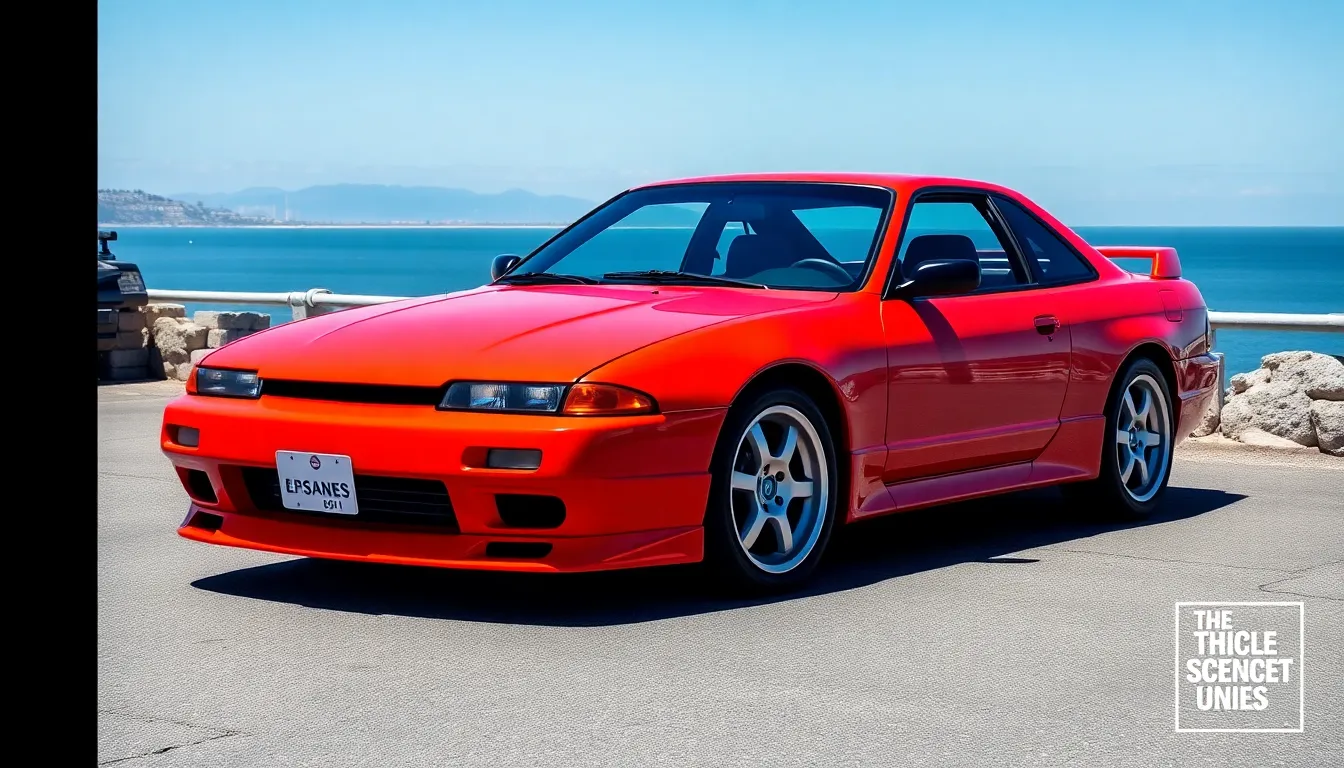
Market values for the Nissan Silvia S13 have experienced dramatic appreciation over the past decade. Clean examples that sold for $8,000 in 2015 now command $25,000 to $35,000 in today’s market.
Current Pricing Trends
S13 pricing varies significantly based on condition, modifications, and regional availability. Pristine stock examples with the SR20DET engine fetch between $30,000 and $45,000 at auction houses like Bring a Trailer and Cars & Bids. Modified drift cars with quality upgrades sell for $15,000 to $25,000 depending on build quality and documentation.
Project cars requiring restoration start around $5,000 to $12,000, though rust damage can drastically reduce values. Coupe variants maintain higher prices than hatchback models, with convertible versions showing the most modest appreciation. Regional pricing shows West Coast markets commanding 20-30% premiums over East Coast listings.
| Condition | Price Range | Typical Mileage |
|---|---|---|
| Concours/Show Quality | $35,000-$50,000 | Under 50,000 miles |
| Excellent Stock | $25,000-$35,000 | 50,000-100,000 miles |
| Good Modified | $15,000-$25,000 | 100,000+ miles |
| Driver Quality | $10,000-$18,000 | 150,000+ miles |
| Project Car | $5,000-$12,000 | Various |
Import restrictions in certain markets have artificially inflated prices for legal examples. Canadian and European S13s often sell at premiums due to their federalized status and cleaner examples.
Future Collectibility
S13 collectibility indicators point toward continued appreciation through 2030 and beyond. Production numbers of approximately 300,000 units create scarcity as examples are lost to accidents, rust, and modifications. Motorsport heritage and cultural significance in drift communities establish strong collector interest among millennials entering peak earning years.
Factory turbocharged models with documented maintenance histories represent the strongest investment prospects. Original paint, interior components, and period-correct modifications enhance desirability among serious collectors. Pop-up headlight variants particularly appeal to enthusiasts seeking authentic 1990s Japanese sports car experiences.
Restoration parts availability remains strong through specialty suppliers and reproduction manufacturers, supporting long-term ownership viability. Engine swap popularity has created demand for original SR20DET powertrains, with complete engines selling for $8,000 to $12,000 independently.
Market trends suggest S13 values will stabilize at current levels before resuming gradual appreciation. Limited production numbers, increasing collector recognition, and nostalgia-driven demand support optimistic investment outlooks for well-maintained examples.
Modifications and Tuning Scene
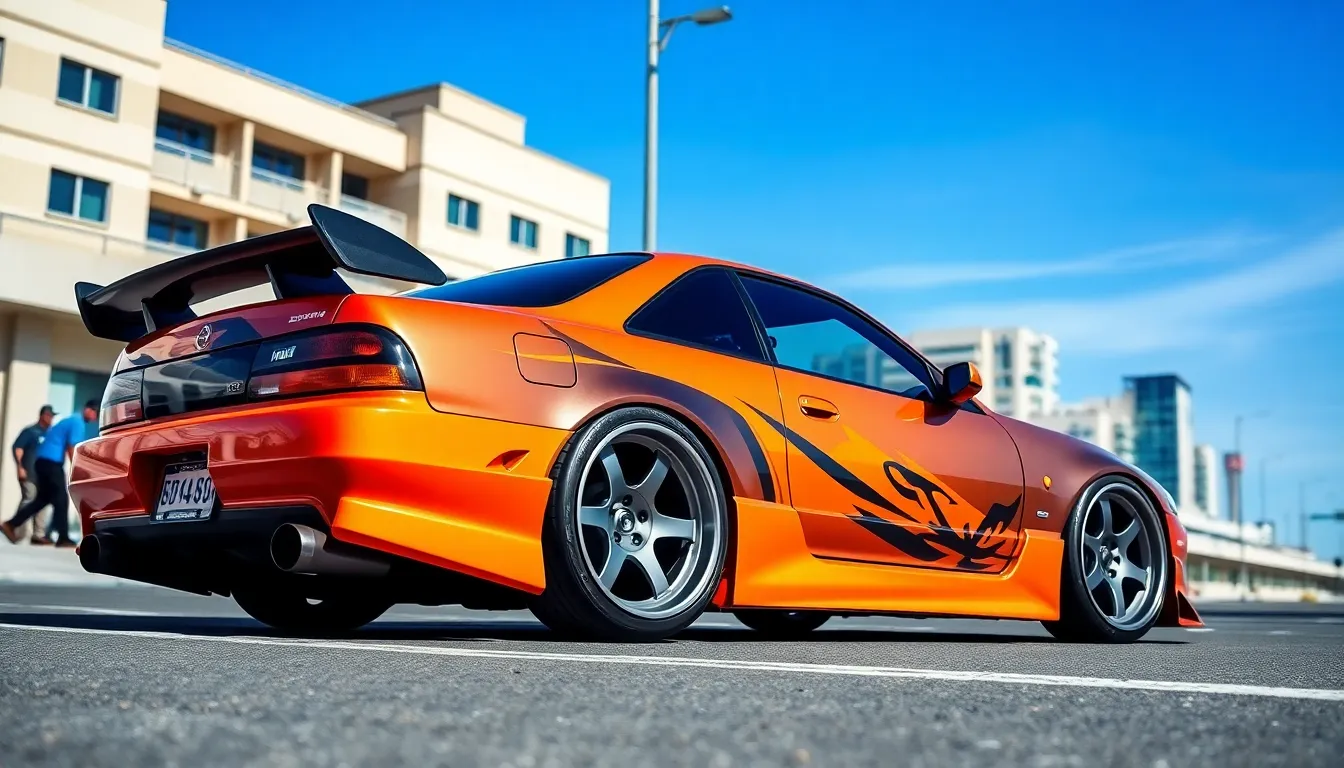
The Nissan Silvia S13’s legendary status stems from its exceptional modification potential and widespread adoption in the global tuning community. Enthusiasts worldwide have transformed these platforms into high-performance machines that far exceed their original factory specifications.
Popular Performance Upgrades
Engine modifications represent the most impactful performance enhancements for S13 owners. The SR20DET responds exceptionally well to bolt-on upgrades, with intake systems, exhaust systems, and ECU tuning delivering immediate power gains. Front-mount intercoolers increase cooling efficiency and support higher boost levels, while turbo upgrades like the Garrett GT2860RS or Precision 6262 enable power outputs exceeding 400 horsepower.
Turbo system enhancements focus on supporting increased power levels through fuel system upgrades. Larger injectors such as Nismo 740cc units provide adequate fuel flow for high-output applications. Performance fuel pumps like the Walbro 255lph ensure consistent fuel delivery under demanding conditions. Standalone engine management systems including Haltech Elite or AEM Infinity offer precise tuning control for modified powerplants.
Suspension modifications dramatically improve the S13’s handling characteristics beyond its already impressive factory setup. Popular coilover systems from manufacturers like Ohlins, HKS, and BC Racing provide adjustable damping and ride height settings. Sway bars, strut tower braces, and chassis reinforcement kits reduce body flex during aggressive driving. Adjustable control arms enable precise alignment settings for track applications.
Drivetrain upgrades address the increased power output from modified engines. Limited-slip differentials from Nismo, Kaaz, or OS Giken improve traction and predictability during acceleration. Upgraded clutches such as Competition Clutch Stage 2 or Exedy Twin Plate handle higher torque loads. Driveshafts and axles from Driveshaft Shop support power levels well beyond factory specifications.
Braking system improvements enhance stopping power to match increased performance capabilities. Big brake kits from Wilwood, Brembo, or Project Mu provide superior heat dissipation and consistent pedal feel. Stainless steel brake lines reduce expansion under pressure while performance brake pads offer improved bite and fade resistance.
Aesthetic Modifications
Body modifications define the visual character of modified S13s across different styling approaches. Aero kits from companies like Origin, Vertex, and BN Sports create aggressive front and rear aesthetics. Side skirts and rear spoilers enhance the car’s sporting appearance while providing functional aerodynamic benefits. Carbon fiber hoods reduce weight while adding distinctive texture to the front end presentation.
Wheel and tire combinations significantly impact both appearance and performance characteristics. Popular sizes range from 17×9 to 18×10.5 inches with aggressive offsets creating the desired stance. Brands like Work, Rays, and Enkei offer lightweight options that complement the S13’s performance orientation. Tire selections from manufacturers such as Nitto, Federal, and Toyo provide the grip characteristics suited to different driving applications.
Lighting modifications modernize the S13’s distinctive pop-up headlight design while improving visibility. HID or LED conversion kits enhance nighttime illumination over factory halogen bulbs. Custom tail light designs from manufacturers like Kouki or LED conversion kits create unique rear signatures. Interior lighting upgrades including gauge cluster illumination provide improved visibility during night driving.
Interior modifications focus on functionality and driver engagement rather than luxury appointments. Racing seats from Bride, Recaro, or Sparco provide superior support during spirited driving. Steering wheels from Nardi, MOMO, or Personal improve grip and feedback transmission. Short shifters and aftermarket shift knobs enhance the mechanical connection between driver and transmission.
Paint and vinyl modifications allow owners to express individual style preferences while maintaining the S13’s classic proportions. Popular color combinations include period-correct schemes like Championship White or modern interpretations featuring matte finishes. Vinyl graphics and decal packages reference the car’s drift heritage while maintaining tasteful execution. Window tinting and vinyl roof treatments complete the aesthetic transformation process.
Conclusion
The Nissan Silvia S13 stands as a testament to automotive excellence that transcends generations. We’ve witnessed how this remarkable machine evolved from an affordable sports car into a global icon that shaped drift culture and motorsports forever.
What makes the S13 truly special isn’t just its performance capabilities or modification potential—it’s the perfect storm of accessibility engineering excellence and cultural impact. Whether you’re seeking your first drift car or adding to an established collection the S13 delivers an authentic driving experience that modern vehicles struggle to replicate.
As values continue climbing and clean examples become increasingly rare we’re reminded that the S13’s legacy extends far beyond its original production run. This isn’t merely a car—it’s a piece of automotive history that continues inspiring enthusiasts worldwide.
Frequently Asked Questions
What makes the Nissan Silvia S13 so popular for drifting?
The S13’s rear-wheel-drive platform, lightweight chassis, and near-perfect weight distribution make it ideal for drifting. Its predictable weight transfer and controlled oversteer characteristics, combined with affordable pricing, made it accessible to both amateur and professional drifters during the sport’s formative years in the late 1980s and early 1990s.
How much horsepower can the SR20DET engine produce with modifications?
The turbocharged SR20DET engine produces 205 horsepower stock but has exceptional modification potential. With basic upgrades like intake, exhaust, and ECU tuning, enthusiasts can achieve over 300 horsepower. More extensive modifications can push the engine to over 400 horsepower, making it a favorite among performance enthusiasts.
What are the common reliability issues with the Nissan Silvia S13?
Common S13 issues include rust (especially around wheel wells and door frames), turbo system failures, electrical problems, suspension wear, and fuel system degradation. Regular maintenance including oil changes, cooling system upkeep, and brake system care is essential for these aging vehicles to maintain reliability and performance.
How much does a Nissan Silvia S13 cost in today’s market?
S13 prices have dramatically increased over the past decade. Clean examples now cost $25,000-$35,000, while pristine stock models can reach $45,000 at auction. Project cars start around $5,000-$12,000. West Coast markets typically command higher premiums due to demand and cultural significance.
What engine options were available in the Nissan Silvia S13?
The S13 offered various engines depending on the market, including the sought-after turbocharged SR20DET (205 hp), naturally aspirated SR20DE, and CA18DE engines. The SR20DET is the most desirable variant due to its excellent modification potential and performance characteristics that made it perfect for both street and track use.
Is the Nissan Silvia S13 a good investment car?
Yes, the S13 shows strong investment potential with prices appreciating significantly since 2015. Factory turbocharged models with documented maintenance histories are particularly valuable. Production numbers, motorsport heritage, and cultural significance support continued appreciation through 2030, making well-maintained examples attractive investment prospects.
What body styles were available for the Nissan Silvia S13?
The S13 was available in three main body styles: a two-door coupe, convertible, and fastback hatchback. All variants maintained consistent design language with clean lines, pop-up headlights, and aerodynamic bodylines that exemplified late-1980s Japanese design philosophy while prioritizing both style and functionality.
How many Nissan Silvia S13s were produced?
Approximately 300,000 Nissan Silvia S13 units were produced from 1989 to 1994 for various global markets. This production number contributes to its current collectibility status, as it’s neither too rare nor too common, making it an accessible yet increasingly valuable classic sports car.

